Point Cloud (ASU), 2020
Nelson Fine Arts Center, Arizona State University, Tempe, AZ
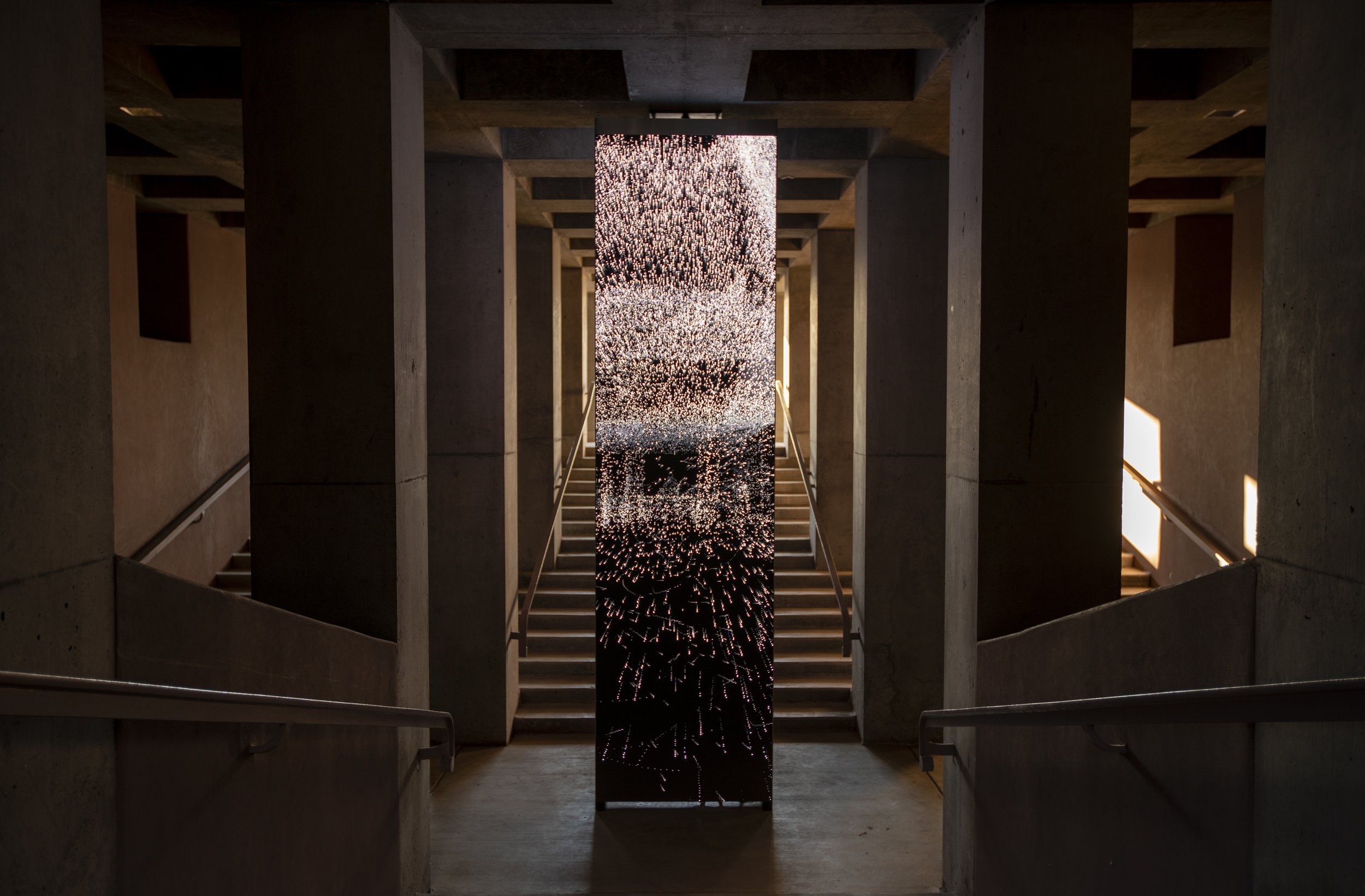

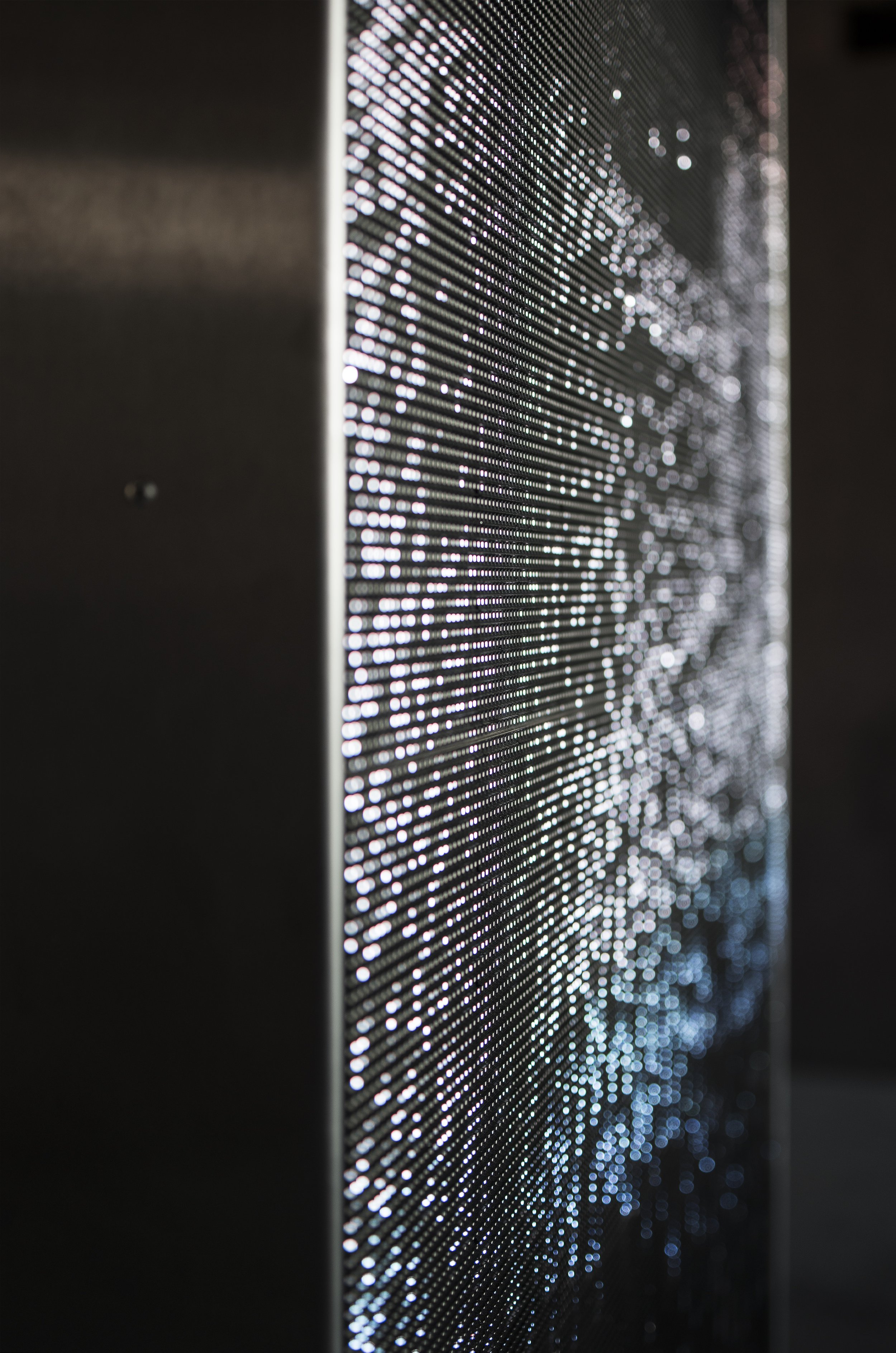
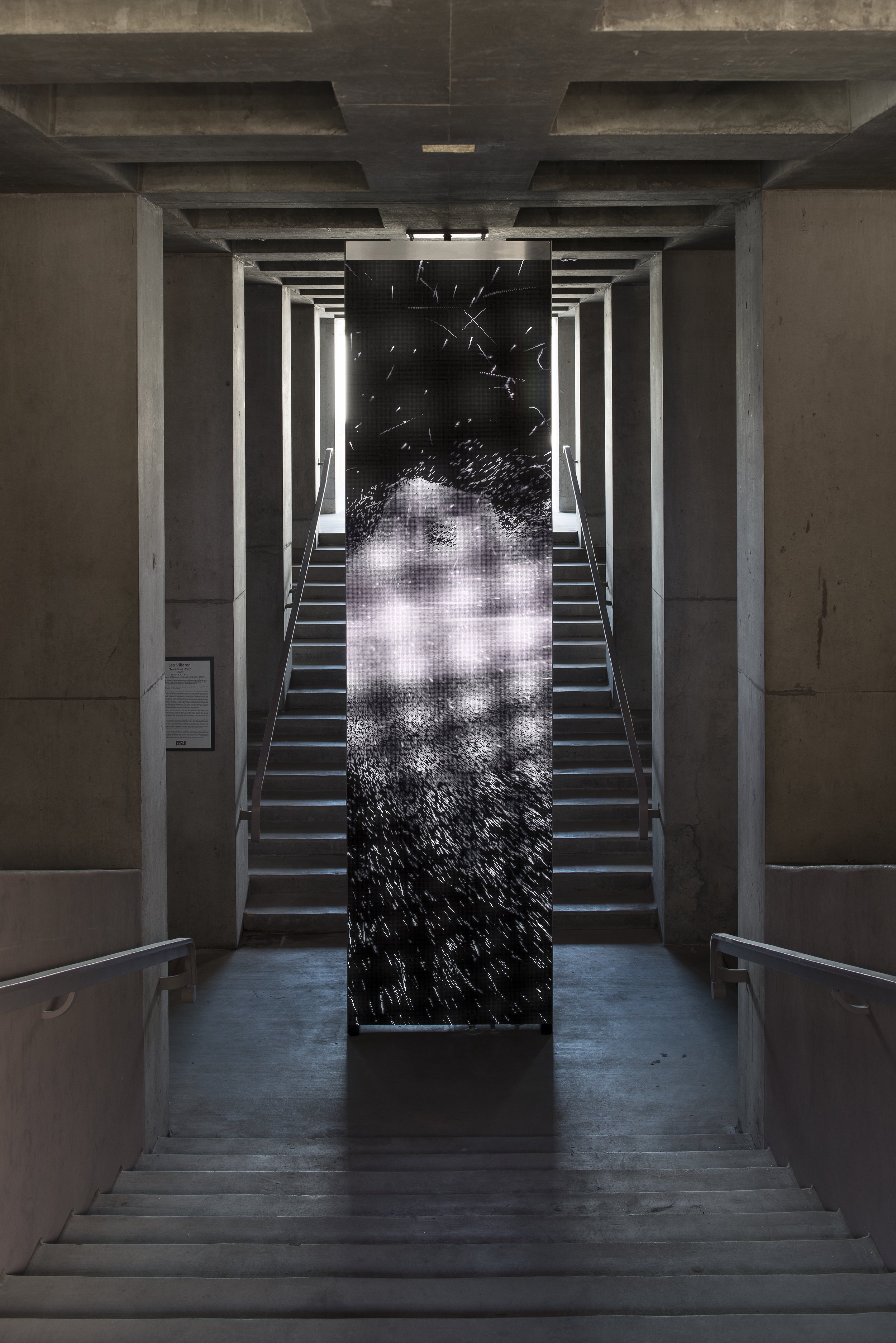
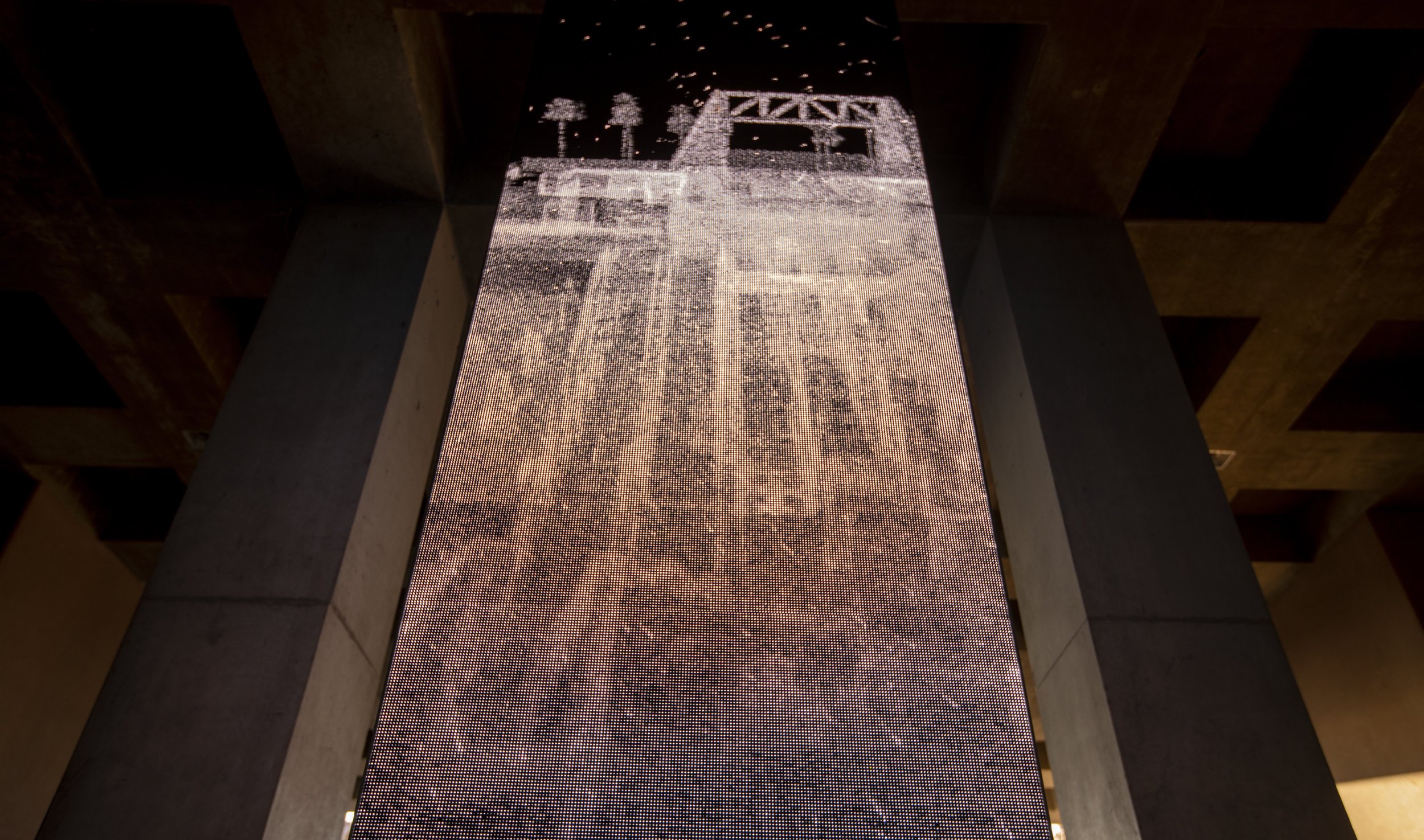
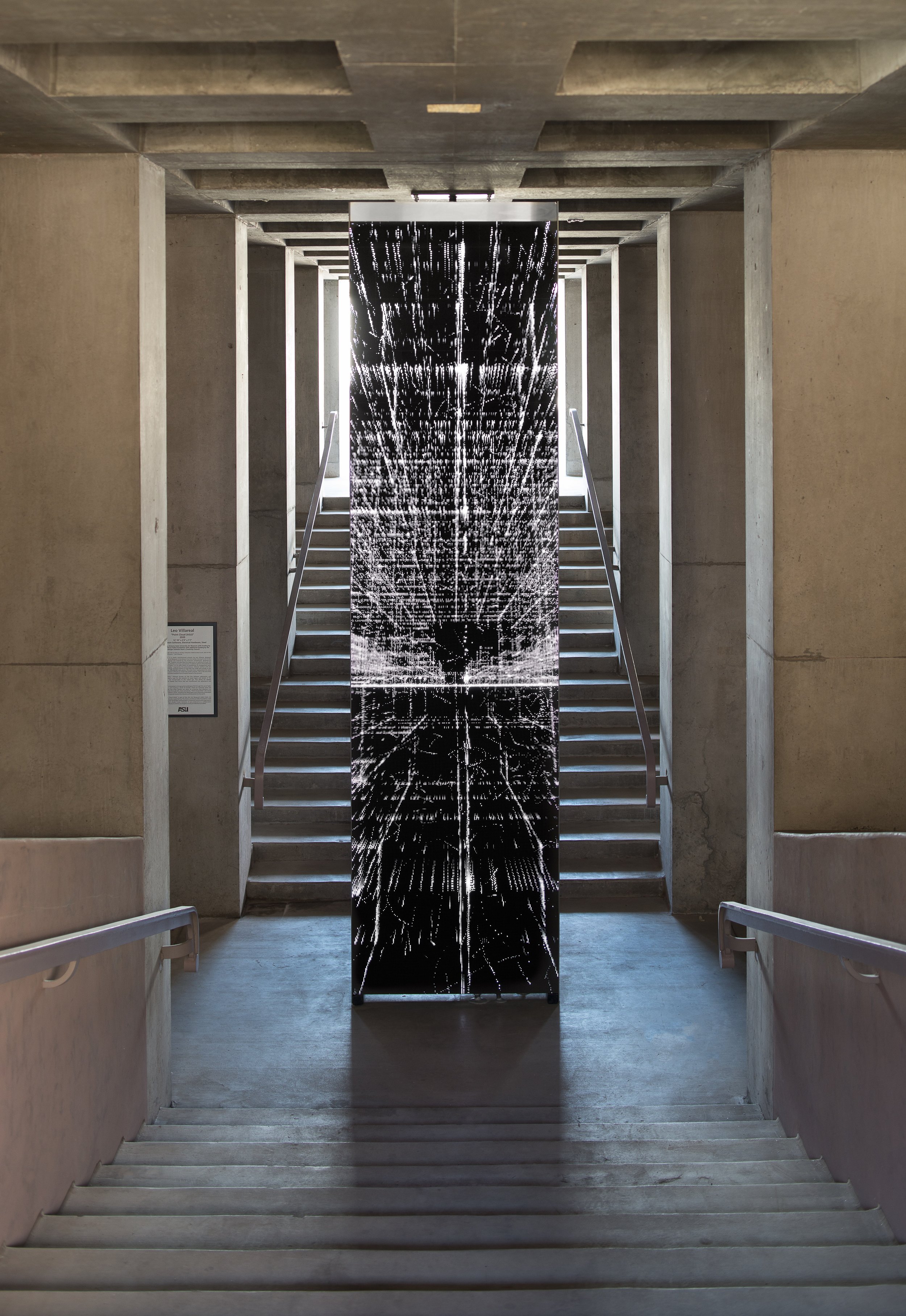

Leo Villareal’s Point Cloud (ASU) is located at the Nelson Fine Arts Center at Arizona State University. The artwork consists of a monolithic double-sided LED screen that measures 12 feet 6 inches tall by 3 feet 4 inches wide by 1 foot deep. Each side of the display contains 324,480 individually-controllable pixels. Villareal engaged the mobile 3D scanning company Kaarta to scan both the inside and outside of the building using LIDAR. The exterior model consists of approximately 147,000,000 points, and the interior model is composed of just over 53,000,000 points.
This is the first time Villareal has used data sampled from a location as part of an artwork. Antoine Predock’s striking 1987 architecture—referred to as the Ship of the Desert—greatly inspired Villareal during his time conceptualizing and programming the artwork ASU. Villareal integrated the point cloud into his particle animation software and used his custom code to manipulate and circumnavigate it. The architecture can be thought of as a set of rules that Villareal explores and deconstructs. Particles express glimpses of emergent behavior as they pour through the space, flowing with their own mass, acceleration, and velocity.
Leo Villareal in conversation with ASU President Michael Crow, Wallis Annenberg Director and CEO of the Los Angeles County Museum of Art Michael Govan, and ASU Art Museum Director Miki Garcia.
Villareal’s interest focuses on the line between abstraction and recognition. Through this artwork, he has created a ‘viewer’ that reveals layers and details of the architecture that would not be recognizable by the naked eye. This portal allows for deeper understanding of the masses and forms that have been transformed into ephemeral and transparent veils. Villareal’s light sculpture is installed on the main axis of the building and offers viewers a shaded amphitheatre-like place in which to gather and contemplate the work.
Villareal is interested in bringing the building to life, revealing the unseen, and creating a sense of wonder. Point Cloud (ASU) also serves as a meditation on Predock’s work, revealing the deep layers and references embedded in the architecture as it ascends toward the heavens and descends into the earth.
Point Cloud (ASU) is part of the ASU Art Museum’s Halle Public Art Initiative and is generously supported by The Diane and Bruce Halle Foundation with additional funding by the Herberger Institute's Dean’s Creativity Council and organized in collaboration with ASU's Roden Crater Initiative. It was produced as a collaboration between the ASU Art Museum and the Los Angeles County Art Museum (LACMA).
